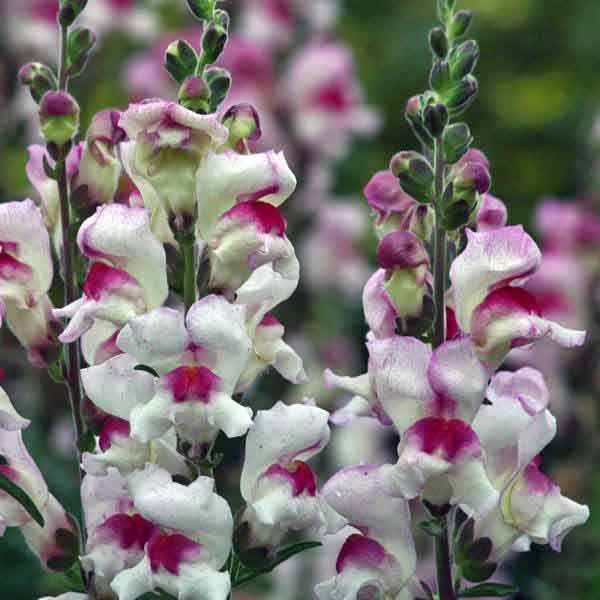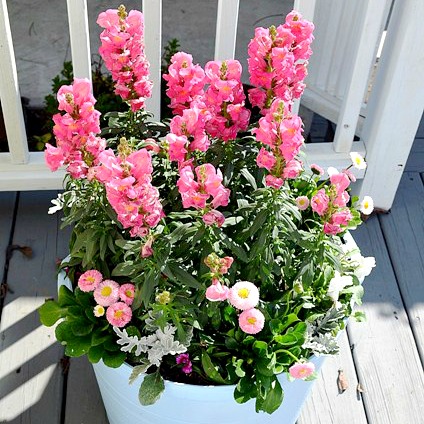Snapdragons are often thought of as old-fashioned flowers, evoking childhood memories of a grandparents’ garden. The snapdragon gets its common name from its flower shape, which (if you use a little imagination) resembles a dragon’s head, and its mouth opens and closes when you squeeze it.
Snapdragons (Antirrhinum majus) are short-lived perennial plants that survive well in cold seasons but are often replanted each spring, and are therefore considered annuals. They do best in full or partial sun in well composted, well-drained soil, since their roots are susceptible to rotting (although they do require regular watering).
Snapdragons can be planted in autumn and late winter/spring. They grow to between 15 – 40cm tall, and are perfect plants for use in a border or pots. Tall varieties can grow up to 1.2m in height. Clipping after each round of flowers is very important, as it encourages the plants to turn bushy and produce more flowers – you can do this by cutting off the top stem after the first bloom, and clip away the long side shoots.
You can propagate snapdragons either by seed or cuttings, but if growing from seed, keep in mind that they’re very slow to germinate. Collecting snapdragon seeds is fun and easy – make sure the pods are dry, then pinch them from the plant and shake the seeds into your hand or a small bowl. If you can’t hear the seeds rattling in the pods, let them dry for a few more days before harvesting.
Sowing them indoors in a light position is a good option. Seeds will start to show within 3 to 4 weeks, and they can then be transferred to your garden. If you’re sowing seeds outdoors, they should be sown after the risk of frost has passed. Don’t forget to water your seeds with GOGO Juice, which not only contains microbes to aid in nutrient cycling, but also contains Triacontanol, a natural plant growth hormone that will give your seeds a boost.


If you want to grow snapdragons from cuttings, it’s best to take the cuttings about 6 weeks before the first autumn frost so they have time to establish themselves. Dip the cuttings in a rooting hormone, plant them in moist, warm soil with some Seamungus, and water in with GOGO Juice. To divide a snapdragon plant’s roots, simply dig up the entire plant in late summer.
🌿 About GOGO Juice – literally teeming with beneficial micro-biology and essentially a pro-biotic for your soil and plants, GOGO Juice combines the “catalystic” power of providing a wide diversity of beneficial bacteria and fungi with the well documented benefits of applying kelp and humates. Applications of GOGO Juice provide a huge boost of the living micro-biology necessary for your soil and plants to perform at their optimum level, increasing their ability to resist pest and disease and to withstand &/or recover from, heat stress and frost.
